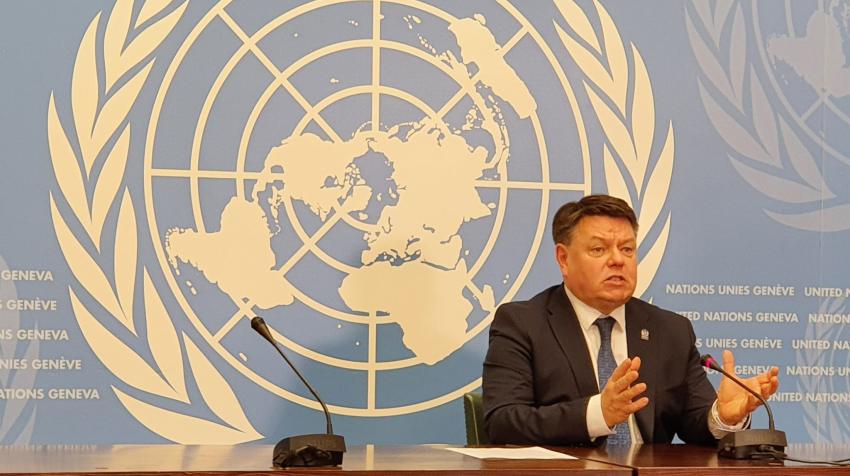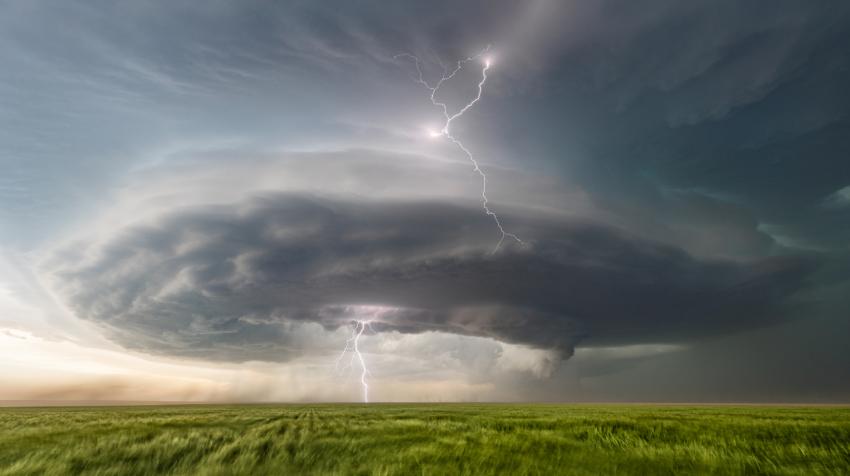Recent reports of the Intergovernmental Panel on Climate Change (IPCC) and its host agency, the World Meteorological Organization (WMO), have confirmed the concerns expressed by atmospheric scientists 50 years ago: greenhouse gas emissions, especially fossil carbon, are causing harmful changes in the Earth’s normal climate.
Such changes have already materialized and the negative trend will continue until the latter half of the twenty-first century, independent of our success in reducing greenhouse gas emissions. Sea level rise and the melting of glaciers are expected to continue for centuries due to the existing high atmospheric concentration of carbon dioxide, the most important greenhouse gas, and one that will persist in the atmosphere for some time.
The impact of carbon dioxide on the warming of the lower atmosphere was first observed by the Swedish physicist Svante Arrhenius in 1894. Neither he nor anyone else could have imagined the dramatic growth in population and the massive consumption of coal, oil and natural gas in the twentieth and twenty-first centuries.
Scientific evidence collected for decades indicates that climate mitigation, especially through reducing fossil fuel consumption and halting deforestation, is vital to ensuring the long-term welfare of humankind and the biosphere.
Several positive steps have been taken to prevent worst-case climate scenarios from occurring. Affordable new technologies that support mitigation, such as solar and wind energy, heat pumps, electric and biofuel vehicles and nutritional products, have become available. Thirty-two countries have successfully reduced their emissions during the past 15 years, and their economies have still grown.
At the 2021 United Nations Climate Change Conference (COP-26, 31 October–12 November 2021), hosted by the United Kingdom in Glasgow, Scotland, the Group of Seven (G7) countries and the European Union, which together are responsible for one third of global emissions, made pledges aimed at holding the warming of the planet within the 1.5°C threshold. The rest of the Group of 20 (G20) countries, including the BRICS countries (Brazil, Russia, India, China and South Africa), are responsible for almost half of global greenhouse gas emissions. Unfortunately, these countries have not yet been able to offer pledges to keep climate warming within the Paris Agreement limits of 1.5°C to 2.0°C. However, efforts to increase the level of ambition to address climate change will continue at the forthcoming climate conferences hosted by Egypt in 2022 (COP-27) and the United Arab Emirates in 2023 (COP-28).
The recent IPCC Sixth Assessment Working Group II report on the impacts of climate change has shown that such effects are already readily visible. We have begun to observe more frequent weather disasters, and their duration and strength have increased.

According to the WMO Atlas of Mortality and Economic Losses from Weather, Climate and Water Extremes (1970–2019), there has been a dramatic increase in the economic losses caused by weather disasters during the past 50 years. The most expensive disasters have affected the United States and China, but the relative economic losses have been largest in small island States and Africa. A single hurricane hit can lead to a reduction in a country’s annual GDP of up to 800 per cent, as observed in the Caribbean States. In Africa, drought or flooding events have led to annual GDP reductions of up to 20 per cent. Thanks to improved early warning services, however, the number of human casualties has decreased.
It is now commonly understood that, in addition to essential climate change mitigation measures, there is a growing need to invest in climate adaptation. Several development institutions are planning to invest 50 per cent of climate financing in climate adaptation. The recent report of the Global Commission on Adaptation, co-chaired by former United Nations Secretary-General Ban Ki-moon, showed that one of the highest returns on investment will be reached by funding early warning services and related infrastructure.
Currently, only half of the 193 WMO member States have proper early warning services, and due to warning dissemination challenges, only about 20 per cent of the world’s population has access to such information.
There are also major gaps in global weather, climate and water observations. The lack of basic weather observations, especially in Africa and island States, leads to severe limitations in the accuracy of weather services. This hampers climate adaptation planning in those countries, since the normal climate baseline is not known. Gaps in hydrological observing systems endanger water resource management, which is vital for human health and well-being, agriculture, industry and energy production.
WMO has created a global weather, climate and hydrological observing system, which consists of ground-based, satellite, balloon- vessel- and aircraft-borne and ocean observations. Standards for observation have been set and a global real-time network has been established for global, free and unrestricted exchange of data.
WMO has designated 13 Global Producing Centres for Long-Range Forecasts that produce global weather forecasts, most of which are made available freely to all WMO members. A new data policy and standard for national observing networks was approved by the WMO Congress in October 2021.
In addition, a new programme called the Systematic Observation Financing Facility was approved. The aim of the Facility is to pledge $400 million during the next five years for the improvement of basic weather observing networks in least developed countries and small island developing States, and to allocate $250 million for their maintenance during the next 10 years. This would enhance the quality of the early warning services in the most vulnerable countries.

Besides the establishment and operation of the global real-time observing system, WMO is working to improve national weather, climate and hydrological services. WMO members and their national weather services are sharing their scientific and technical know-how with members from less developed countries.
The World Bank has estimated that the return on investments in weather services is at least tenfold. These investments are beneficial in a wide range of sectors, such as public safety, agriculture, energy, health, infrastructure, aviation, marine transportation, road safety and defence. WMO has launched a dedicated development programme called the Climate Risks and Early Warning Systems initiative with the United Nations Office for Disaster Risk Reduction and the World Bank to improve national early warning skills. So far, more than 50 countries have been supported through that programme, which is financed by eight developed countries.
Many of the impacts of climate change and disaster are experienced through water-related events, namely flooding, intensified storms, drought, the melting of glaciers and salination of coastal freshwater resources due to sea level rise. During the past 20 years, 2 billion inhabitants have experienced a major devastating flooding event; 1.5 billion, drought; and 700 million, a damaging tropical storm. In 2021, flooding led to thousands of casualties in several countries, including Belgium, China, Germany and India. Severe drought and forest fires took place in Brazil, Canada, Russia and the United States.
There has been a dramatic increase in the melting of glaciers over the past 20 years. The melting of major glaciers in Antarctica and Greenland will lead to sea level rise of several metres in the coming centuries. The melting of mountain glaciers, for example in the Alps, Andes, Himalayas and Rocky Mountains, is endangering the availability of fresh water for several major rivers globally.
According to the IPCC Working Group I report (the physical science basis), global rainfall patterns and soil moisture have already changed and will further change during the coming decades. This is expected to endanger global food production capacity and make living conditions more challenging on all continents.
There is an obvious need to invest in basic weather, climate, and hydrological services to mitigate the impacts of climate change. WMO has estimated that investments in related infrastructures and services worth 1.5 billion dollars would lead to major economic benefits and save lives as an effective climate mitigation act. Beyond financial investment, there is a need to raise the ambition level of climate mitigation to avoid the worst climate risks.
The UN Chronicle is not an official record. It is privileged to host senior United Nations officials as well as distinguished contributors from outside the United Nations system whose views are not necessarily those of the United Nations. Similarly, the boundaries and names shown, and the designations used, in maps or articles do not necessarily imply endorsement or acceptance by the United Nations.




